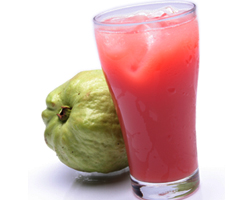Which Fruit Has The Most Folate (Vitamin B)?
What Is Folate?
Folate is a B vitamin that easily dissolves in water. It occurs mostly in foods such as leafy greens and grains, and it can also be converted into a supplement known as folic acid. The name folate derives from the Latin word “folium”, which means leaf. Adults and children require folate in their bodies to improve cellular health. This specific B vitamin also reportedly benefits cardiovascular health and mental well-being, to name a few.
Folate In Our Body
Growth and cell division are among the most vital functions necessary for healthy children and adults, with special attention paid to pregnant and nursing women. Folate lays the foundation to produce the building blocks of cells known as DNA and RNA. The vitamin helps to generate new, healthy cells within the body and make healthy red blood cells that block the onset of anemia, which is a condition that causes blood loss and fatigue. In addition to building DNA and RNA, folate also helps defend against any abnormalities that may cause cancer. It also works with homocysteine levels in the body by metabolizing the amino acid and therefore preventing cardiovascular problems such as hardening of the arteries, or atherosclerosis, heart attacks and blood clots.
Folate gets absorbed into the body through the consumption of foods like spinach, broccoli and romaine lettuce. Grains like rice and cereals also carry significant amounts of folate, as well as citrus fruits like oranges.
Folic acid supplements are often reserved for pregnant women or those with folate deficiencies. Experts recommend a daily intake of 400 micrograms for adults; 150 to 300 micrograms for children up to age 13; 600 micrograms for pregnant women and 500 micrograms for breastfeeding women.
Side effects have also been reported, particularly in patients who take other medications or supplements. For example, folate may cause a blood pressure or blood sugar drop. Therefore, adjustments may be made to the patient’s medication schedule. Symptoms such as bloating, cramps and nausea may also occur from taking too much folate.
Top Fruits For Folate Content
The amounts of Folate are given for 100g of each fruit.
1 Guava 49,00 mcg
2 Papaya 38,00 mcg
3 Pomegranate 38,00 mcg
4 Durian 36,00 mcg
5 Mangosteen 31,00 mcg
6 Orange 30,00 mcg
7 Carrot 27,00 mcg
8 Kiwi 25,00 mcg
9 Blackberry 25,00 mcg
10 Strawberry 24,00 mcg
11 Melon (Cantaloupe) 21,00 mcg
12 Raspberry 21,00 mcg
13 Banana 20,00 mcg
14 Pineapple 18,00 mcg
15 Pumpkin 16,00 mcg
16 Tangerine 16,00 mcg
17 Tomato 15,00 mcg
18 Lychee 14,00 mcg
19 Jackfruit 14,00 mcg
20 Mango 14,00 mcg
21 Grapefruit 13,00 mcg
22 Lemon 11,00 mcg
23 Apricot 9,00 mcg
24 Redcurrant 8,00 mcg
25 Lime 8,00 mcg
26 Passion Fruit 7,00 mcg
27 Cucumber 7,00 mcg
28 Blueberry 6,00 mcg
29 Mulberry 6,00 mcg
30 Elderberry 6,00 mcg
31 Gooseberry 6,00 mcg
32 Fig 6,00 mcg
33 Plum 5,00 mcg
34 Cherry (sweet) 4,00 mcg
35 Peach 4,00 mcg
36 Grape 4,00 mcg
37 Watermelon 3,00 mcg
38 Apple 3,00 mcg
39 Cranberry 1,00 mcg
